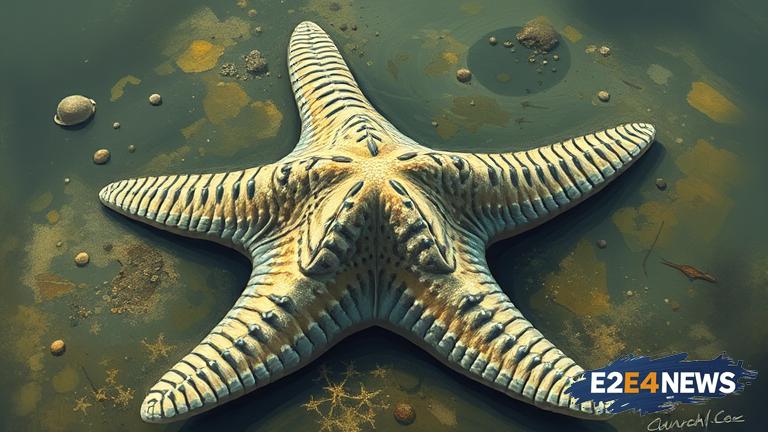A recent and alarming trend has been observed in the marine ecosystem, with a significant number of sea stars dying off in a short period of time. The cause of this die-off is still unknown, leaving scientists and marine biologists scrambling to find an explanation. Sea stars, also known as starfish, play a crucial role in maintaining the balance of the ocean’s ecosystem, and their sudden disappearance could have far-reaching consequences. The die-off has been reported in several locations, with some areas experiencing a decline of up to 90% in sea star populations. The affected species include the sunflower sea star, the giant pink short-spined sea star, and the mottled sea star, among others. Researchers are working tirelessly to determine the cause of the die-off, with possible explanations ranging from disease and pollution to climate change and ocean acidification. Some scientists believe that a combination of factors may be contributing to the die-off, making it even more challenging to identify a single cause. The investigation is ongoing, with scientists collecting samples and conducting experiments to better understand the situation. The sea star die-off has significant implications for the marine ecosystem, as these creatures help to regulate the population of other marine species. Without sea stars, the ecosystem could become disrupted, leading to a cascade of negative effects. The die-off has also raised concerns about the potential impact on the fishing industry, as sea stars play a crucial role in maintaining the health of fisheries. Furthermore, the loss of sea stars could have a ripple effect throughout the entire ecosystem, leading to changes in the composition of species and potentially even affecting the livelihoods of people who depend on the ocean for food and income. The mystery surrounding the sea star die-off has sparked a sense of urgency among scientists and conservationists, who are calling for immediate action to address the issue. The situation highlights the importance of continued research and monitoring of the marine ecosystem, as well as the need for effective conservation strategies to protect these vital creatures. In addition to the scientific community, the general public is also being encouraged to get involved in the effort to understand and address the sea star die-off. By reporting any observations of dead or dying sea stars, individuals can contribute to the ongoing research and help scientists to better understand the scope of the problem. As the investigation continues, it is clear that the sea star die-off is a complex and multifaceted issue that will require a collaborative effort to resolve. The situation serves as a reminder of the importance of protecting the marine ecosystem and the need for continued research and conservation efforts to preserve the health and biodiversity of our oceans. The sea star die-off is not only a concern for the scientific community but also for the general public, as it has the potential to impact the health of the ocean and the many species that depend on it. In conclusion, the mysterious sea star die-off is a pressing issue that requires immediate attention and action. By working together, scientists, conservationists, and the general public can help to uncover the cause of the die-off and work towards a solution to protect these vital creatures and the ecosystem they inhabit.





